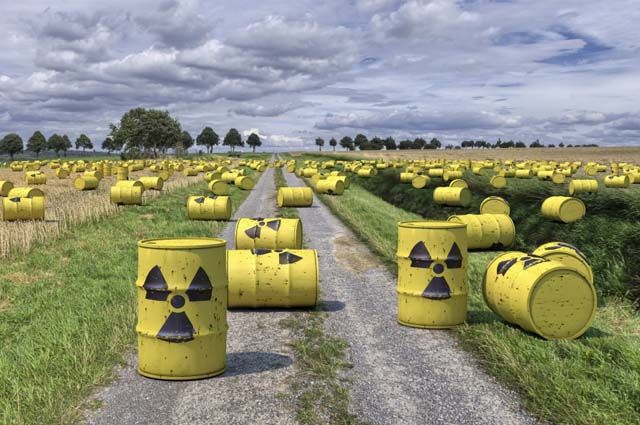
From the storage facility of the nuclear company Orano, located in Pierrelatte, 20 containers of reprocessed uranium arrived at the port of Dunkirk last night and were immediately loaded onto the container ship Conmar Elbe. The Cypriot-flagged vessel is due to deliver the cargo to the port of St. Petersburg next week. & Nbsp; From there it will go by rail to Seversk, where it will be processed and again become a valuable fuel for the nuclear power plant.
Today appeared in the port 10 activists from Greenpeace France, who unfurled banners with the words: “ Russia '' not a 'dump', '' Stop radioactive transport '' etc
Direct profit
The story is not new. People who call themselves environmentalists have long spread such scarecrows, substituting the concepts with enviable persistence.
Indeed, French law defines recyclable uranium as a valuable raw material and not as waste. The isotope U-235 is contained in it in an amount not less than that of natural uranium. Our atomic scientists also treat it the same way, sending it back into the fuel cycle either directly or by re-enriching it or mixing it with enriched or natural uranium.
But we turned for a comment not to an atomic scientist, but to a scientist from Moscow State University, in order to get an independent assessment.
Vladimir Petrov, associate professor of the Faculty of Chemistry, Moscow State University, head of the laboratory for dosimetry and environmental radioactivity , according to him, does not ; is unaware of the trade terms of the agreement under which reprocessed uranium is transported.
“But I understand why and why this is being done,” he said. & ndash; First of all, let me remind you that waste (even by law) refers to materials that cannot be used at the current level of technological development. At the same time, regenerated uranium & ndash; it is a raw material, moreover, a raw material is quite valuable. This is the material that is recovered from spent nuclear fuel after it leaves the reactor. In other words, it is uranium, which did not burn in the reactor and can be reused. '
V. Petrov noted that the extraction of uranium from the bowels of the earth, ore, its separation, purification and enrichment & ndash; rather expensive processes.
“ On the other hand, there is uranium in the reactor fuel. And there is a direct benefit to recovering unburned uranium from spent fuel and reusing it, ”he explained.
According to the scientist, all RBMK-type reactors (a series of graphite-water reactors on thermal neutrons, where the coolant is boiling water), currently in service in Russia, are powered by fuel based on thermal neutrons. Reprocessing uranium. Their total power & ndash; about 10 GW, this is enough to supply electricity to several million cities.
And now there are plans to switch to regenerated uranium and newer reactors & ndash; VVER type (water moderated).
Owners of unique technologies
“ Another thing is that not many people in the world know how to handle recyclable uranium in a way that is both safe and cost effective. There are such technologies in Russia, they have been mastered on an industrial scale and are successfully applied. This is why reprocessed uranium is brought to Russia: we know how to use it, and we know how to use it correctly, ”noted V. Petrov.
Indeed, we should be proud that our nuclear scientists have 35 years of experience in using reprocessed uranium as a feedstock in the production of nuclear fuel for power plants. Russian and Western designed nuclear, that they have unique technologies in this field. In fact, the contract with Orano came from the fact that we have the technology, and the French & ndash; no.
The use of their raw materials will, on the one hand, save as much natural uranium as it would be necessary to extract in the mines for several years. And on the other hand, it will help preserve a strategic reserve of natural uranium for future generations. Well, people who call themselves environmentalists shouldn't forget to reduce the burden on the environment by deepening the treatment of irreplaceable natural resources.

